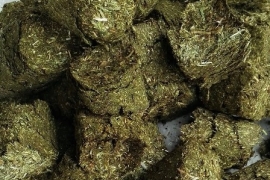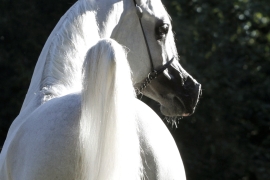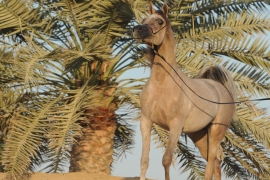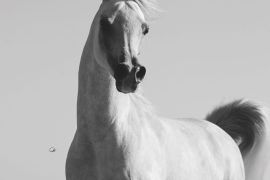The horse's diet must vary, both qualitatively and quantitatively, in relation to weight, breed, sex, age, climate, season and the work to which it is subjected. Highly blooded and well-bred animals need abundant and refined nutrition, and males require a larger ration than females. Growing foals require foods that are easily digestible and have a high nutritional value, while older horses require a rather limited food intake.
During the summer and in the hot periods the ration will be reduced, while in the cold periods it will be increased. Horses subjected to strenuous work and which involve a considerable expenditure of strength, must receive an adequate and proportionate ration for the activity carried out. The foods that contribute to the horse's diet are: hay, straw, grains (oats, barley, maize), green grass, flour and bran. The best hay is the first cut or hay. The good quality of the hay depends on the nature of the land that produced it and is recognized by the greenish color, the aromatic smell and the pleasant or sweet taste; smell and taste are given by the variety of herbs present. The goodness of the hay depends above all on the right degree of fermentation reached after the drying process and on the suitability of the premises in which it was stored. Fermentation takes about forty days and if developed too well it leads to a poor product which, if consumed, can cause intestinal disorders that are often severe. Also the moldy hay should be discarded, the third cut hay (September) because it is not very nutritious and the old one, that is, produced for over a year.
The most suitable straw for horse feeding is that of wheat and must be dry and of its characteristic color, it must be made up of long and fine stalks and emanate a smell similar to that of wheat. Among the grains, oats are the ones with the most energetic power, even if they are quite exciting. A good oat must be free from impurities, dry, with a moderately aromatic scent and have full and compact grains. Barley is more nutritious than oats and less exciting, but it can cause inflammatory processes in the living tissues of the foot.
Corn is quite nutritious, but low in energy. Wheat, barley and oat flours are used to make mash. The bran has little nutritional power, but in small quantities, especially in mash, it is refreshing. The green grass is given in spring, at the time of harvest, it is very rich in water and not very nutritious and if consumed for several days in a row it can have a purgative action.
Other foods useful for horse nutrition are represented by carrots, rich in vitamins and very refreshing, by the grass, with the same properties, by the leaves of some trees including the elm and the poplar, by the linseed that have a regularizing action of intestinal functions. The daily ration must be administered in two meals, in the morning and in the evening, and must be supplemented by an adequate supply of mineral salts, in particular sodium chloride, which must be placed in the form of a roller in the manger. Two or three days a week it is advisable to administer mash consisting of oats, bran and linseed, with the addition of boiling water, or cooked. The quantity of individual foods varies mainly in relation to the work to which the animal is subjected.
In addition to a healthy and nutritious diet, fresh and clean water must be made available to the horse so that he can quench his thirst throughout the day. If the box does not have a water tank, watering must be provided twice a day before meals.

Agri Farm Go to the author's page
Agrifarm started its business in 1993 in Vigone, a family-run business that occupies an area of 10,000 square meters, They find in their spaces: sheds, silos, warehouses, two dryers, the mill, premises used for production, sale, storage, to the laboratory and offices.Thanks to the experience gained in the field, they put theirselves at the service of farmers with passion and determination with innovative products that can support modern agriculture.
Their goal is to continue to act as a link between the needs of the various agricultural realities and to guarantee safety and quality from seed to table.
Customer satisfaction combined with trust and mutual esteem is a central part of the company philosophy.







